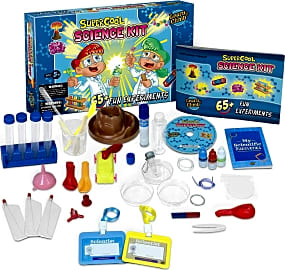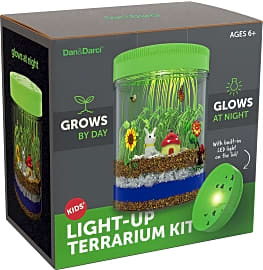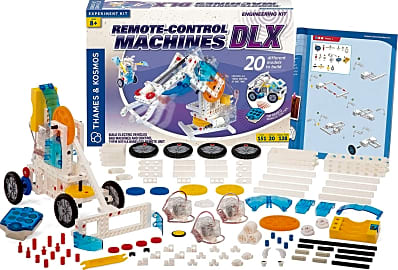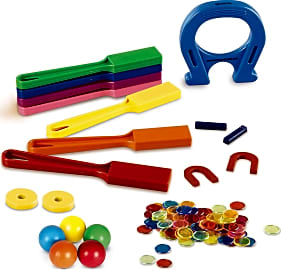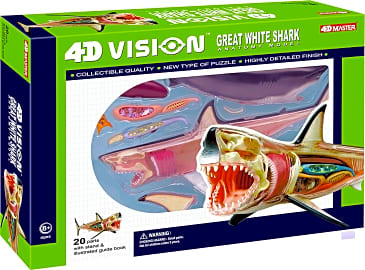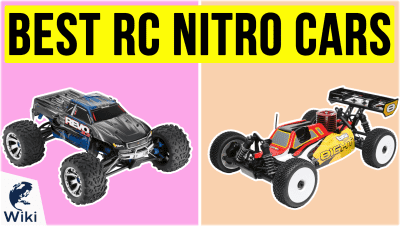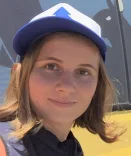The 10 Best Science Toys

This wiki has been updated 41 times since it was first published in May of 2015. Whether biology is your child's favorite subject or you need to help convince your grade-schooler that chemistry isn't boring, getting a science toy can be a great way to provide fun and education at the same time. We've included options for a range of ages, so whether you're shopping for kindergartners or teenagers, you should find something here that challenges and captivates them. When users buy our independently chosen editorial recommendations, we may earn commissions to help fund the Wiki.
Editor's Notes
May 06, 2021:
In this update, we replaced the Thames & Kosmos Crystal Growing with the National Geographic Earth Science. While just about every experiment in the Thames & Kosmos kit requires days of waiting, the offering from National Geographic has a range of activities to keep kids entertained, including crystal growing, "excavating" quartz and pyrite, and building an erupting volcano. It also includes several rock specimens, like pumice, agate, and tiger's eye.
The Magic School Bus Chemistry Lab had fun packaging, but the instructions and materials inside didn't live up to expectations. We replaced it with the Learn & Climb Super Cool Kit, a more comprehensive set that covers over 65 experiments, and has video instructions in addition to a detailed illustrated guide. It also comes with two "scientist" nametags and a notebook where kids can write down their discoveries.
The Laser Pegs Space Fighter was removed because it's closer to science fiction than actual science. We replaced it with the Lego NASA Apollo Saturn V. While this set is too complicated for younger kids, teens with an interest in space can have fun building and displaying this replica of a historic rocket.
Finally, we removed the Klutz Chain Reactions Kit due to availability concerns. In its place, we added the 4M Clean Water, which has the materials needed to create a miniature filtration system that can clean up dirty or salty water. In addition to being a fun and educational activity, this can be a great tool for introducing kids to concepts like limited resources and the importance of taking care of the environment.
January 27, 2020:
Any good scientist knows how important it is for an experiment to be repeated, so we find ourselves particularly interested in science toys that offer either multiple design configurations or great replay value. That's one of the reasons that the Be Amazing Toys Science Kit lost its place on our list, as it didn't include quite enough raw materials to do experiments more than once or twice, and it suffered availability problems, so even if you wanted to just buy another to keep the fun going, you might not be able to.
In its place we included the Dan & Darci Light-Up Terrarium, which filled a gap in our STEM approach to this list by offering botany lessons disguised as a small nightlight garden. And when whatever your kiddos grow inside dies, you can replant with new materials.
Of course, we'd be remiss if we didn't take every chance we had to warn against using any of these toys beneath their intended ages, as many have small pieces that could easily become choking hazards. Fortunately, the companies do a pretty good job assigning age minimums based on stringent standards.
Reaching The Minds Of Young Scientists
One of the best ways that you can help instill an interest in the sciences in a child is to equip them with a science toy that they will love.
Relevance is a tough thing to impart in the sciences when you’re trying to relate to the specific interests of a group as diversified as a public high school classroom. What appeals to one kid in the room might not matter to anyone else, and as class sizes appear to be steadily on the rise in public schools, finding ways to engage with the group as a whole tends only to water down the depth of meaning for the young minds in question.
Now, more than ever, it’s vital that we find ways to get our kids interested in math and science fields. Regardless of your political beliefs or interest in climate change, the fact remains that mathematic and scientific exploration of our environment and universe is a cornerstone of the successful 21st century economy. The fewer children we see graduating into these fields, the worse our economy will perform in years to come.
So, if our public schools aren’t in a position to engage our young students in STEM programs, it falls to parents to find ways to inspire their children to find a personal connection to the field. One of the best ways that you can help instill an interest in the sciences in a child is to equip them with a science toy that they will love.
When I was little, that meant a microscope set complete with slides, various tools, and a slew of chemicals that were safe for kids to play with. I could watch a variety of chemical reactions under the lens of a microscope, perform dissections, and keep detailed notes of my observations.
There are science toys available today that appeal to more than just the budding biologist, however. You can find toys designed to unlock the mysteries of magnetism and electricity, to engage the architectural mind of a young builder, and to provide your kids with hours of educational fun along the way.
Natural Selection: Choosing The Right Science Toy
While a great science toy can open up a child to a world of wonder as well as a potentially lucrative and rewarding career, the wrong science toy may begin to build up the kinds of divisions among the sciences that plague even the adult scientific community. There’s a good chance that any animosity between an astrophysicist and a marine biologist started long before either set foot on a college campus. If a good student of the sciences remains open to the interconnectedness of all scientific inquiry, he or she will have a much wider view of the possibilities of their own specific field.
Imagine, for example, that your child has a group of friends all of whom are deeply interested in electricity.
Imagine, for example, that your child has a group of friends all of whom are deeply interested in electricity. They take apart old radios and trace the lines of their circuits until they’ve developed a deeper understanding of the machines than you might have. Now, imagine that you get that child an anatomical model of the human body as a gift, and that, despite her desire to play with it, her friends make fun of it (ignorant as they might be to the electrical impulses that power the heart). In that moment, a bias is born in your young scientist’s mind against the science of people and toward the science of things.
The key here is to put your ear against the railroad tracks for a day or two (please, don’t literally do this) to get a sense of what the child for whom you’re shopping is into. Try to find something in that wheelhouse, or at least something close to it. The budding electrical engineer mentioned above might have had better success receiving a chemistry set, as she might have involved different chemicals in her and her friends’ electrical experiments. A tiny bit of attention and critical thinking should do the trick.
A Brief History Of Educational Toys
The earliest known toys, found in the ruins and histories of cultures from North Africa, Greece, and Rome, were almost all dolls of one kind or another. In many ways, these dolls likely served an educational means by which a child could learn about their body, the bodies of others, and how to care for a young infant child. Later toys in these and other regions also served educational purposes, as these took the form of rudimentary weapons including toy bows and arrows and toy spears. With these early tools in hand, children could learn how to hunt and protect themselves and the members of their community.
With these early tools in hand, children could learn how to hunt and protect themselves and the members of their community.
Even as toys evolved with the times, they were rarely manufactured outside the home, with the notable exception of dolls and military figurines made for wealthy children. Here we can also see the same impetus behind the toys of early civilization; wealthy young girls were given ornate dolls to develop maternal features, and rich young boys were given the opportunity to command a mock military battalion, should they one day have control over an actual group of soldiers.
As early as the late 17th century, educational philosopher John Locke posited that blocks with letters on them could enhance a child’s study of his or her letters, providing a source of fun while also accelerating learning. These blocks, and jigsaw puzzle maps for geography, were soon available in niche shops around Western Europe.
Germany saw the next wave of educational toys aimed at increasing a child’s spacial and tactile awareness. These were the famous Froebel’s Gifts, which included a wide array of colored and unpainted shapes of varying sizes that could line up and interact on a series of wooden dowels.
Similar sets cropped up over the course of the next 150 years, with the advent of plastics providing a canvass upon which toymakers could create the modern incarnations of these early educational toys.



